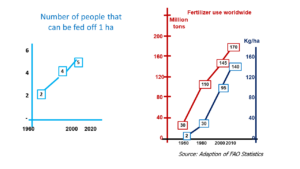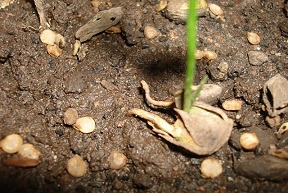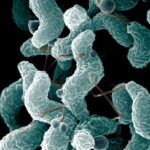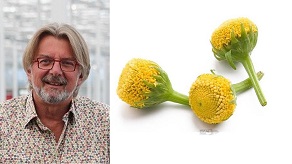Until quite recently, professionals in healthcare tended to look upon body and mind as strictly separated therapeutic entities. And we still don’t treat them a being equal. The notion that all phenomena are interconnected permeates to an increasing number of subjects; but the techniques to translate that insight into practicable methods are limited in number. The human brain can handle 5 variables at most. Heavy-duty computers, algorithms and artificial intelligence can handle an infinite number of variables in principle. But then, for a holistic approach we will have to translate the outcome of such arithmetic to practical application, we hardly know yet how to do so. And yet, this holds a promise for many scientific areas.
Project ‘100 years of antibiotics’
Episode 69. The future of pharma in 3 acts, no.1. More of the same
Episode 70. The future of pharma in 3 acts, no.2. The promises of biology
Episode 71. The future of pharma in 3 acts, no.3. Towards a holistic approach

Example from other subjects
Developments in agrochemistry might set an example for the future of pharmaceutical industry. Agrochemistry is an umbrella name for fertilizer and plant protection industries. The Green Revolution ended hunger in the world. Through the use of much fertilizer, combined with better crops (predominantly rice and wheat) and a long list of chemical agents. Much of the rise of Southeast Asia is the result of this revolution. In fact, agriculture is one major demonstration of efficiency improvement. But we now clearly approach the end of this development.
Agrochemical industry was pleased with modern biotech’s results, when this showed early this century that each plant is surrounded by a microbiome consisting of millions of organisms. The microbiome forms a tightly knit ensemble with the plant itself, a community with many symbiotic aspects and many forms of communication. Industry figured: this would open up a whole new universe, from which we could derive many new generations of insecticides, herbicides and pesticides. But after ten years of research, no results have popped up so far!

The holistic approach in biotechnology
We now know that there is not one single decisive system in biotechnology. Not even a limited number of relevant molecules. The system needs the contribution of each and every part. This has sped up the decline of agrochemical industry. Almost all old and well-known insecticides, herbicides and pesticides are now being produced in Asia. As a matter of fact, Bayer and BASF are the only two remaining players in the Western world. Above all, they target biological processes; together with a growing number of small new companies.
Emphasis is not on better kinds of fertilizer anymore, or subtler insecticides. Instead, the search is much more for complex mixtures that serve the plant’s wellbeing; from seed to plant to yield. Like seaweed as a biostimulant; or humus and its multitude of components; or pre-digested protein (hydrolysates); and quite importantly, mixtures (maybe coexistences) of bacteria and moulds. The common denominator? They’re all substances and organisms in which we cannot determine the molecular makeup with great precision, and in which the whole has more effect than the sum of the constituent parts. From single reductionist molecules towards a more holistic approach.

The significance for pharma
It is not possible to address the future of such a large sector like the pharmaceutical industry in just a few pages. And yet we judge that the holistic approach, like in agrochemistry, will be an important determinant of development. We can compare the microbiome around the plant to the major genetic diversity in the flora of our intestinal tracts, like treated in episode 55, Antibiotics and the intestinal flora. stool transplants are among the first example of the use of complex entities as a cure. Other examples are combination therapies (for instance in HIV treatment) and the control of resistant bacteria, using a combination of antibiotics and medicines that knock out the resistance mechanism.
The rise of biological preparations (see episode 70, The promises of biology) might signify a major first step towards a holistic approach. We increasingly use fast-growing organisms as a vehicle for the production of therapeutically active compounds; doing so, we don’t have to confine ourselves anymore to the production of single molecules, however complicated. In principle such organisms can also produce complicated mixtures of substances. Key to that is the introduction of the correct genetic information; and we have a fast-growing expertise in doing so, and a corresponding choice.
We can use the often mentioned CRISPR-Cas techniques for instance, in order to repair or change genetic codes. Or consider the pure scientific research in which we break down the biological cell, down to each and every component; or the craft in which we will be able to build a new and viable cell, starting from well-defined parts. The use of stem cells and other forms of cell therapy also fit into the holistic approach. As do the use of organoids in research and therapy, and a multitude of transplant techniques. Again and again, immunotherapy comes up with new and complex methods that reinvigorate our immune systems; take the modern m-RNA vaccines as a telling example.
No gene harvesting
In the early years of biotechnology, genetically modified animals and plants provoked many public discussions. We didn’t want mad animals and were concerned about runaway crops and weeds in the lands next to our homes. Technologists and scientists protested against such an opposition, often based on faulty or debatable arguments. And yet, researchers found a way out, by applying the most modern techniques in well-controlled conditions, as far as feasible.
Again, we find a parallel to another major sector, here cattle-breeding. Intensive animal husbandry represents the wrong choice; but artificial meat grown from muscle stem cells in a sterile environment is quite acceptable. Just like modern greenhouse techniques in the controllable conditions of a greenhouse. This can also be a step towards the use of complete organisms or plants in present-day medicine. The first examples come to the fore. Whereas most producers still use fast-growing microorganisms in the production of their medicines, BASF does so using moss plants. They use the moss bioreactor for production of crops better resilient towards drought, cold and plagues; and for the production of biomedicines as well.

The plant as a medicine
That opens up the possibility of using the whole plant as a medicine. It might even open up a vista on a connection with traditional Chinese medicine. We also witness such an opening in the work of Rob Baan at Koppert Cress. He sells micro vegetables as a delicatessen, but tries above all to emphasize their major health effects. He is allowed to make that claim in Japan, but for the time being it meets with a lot of resistance in Europe.
Our insight into the modus operandi of microorganisms and plants grows continuously; particularly into the connection between those processes and their interactions. This will lead us to new discoveries. We will not just discover new molecules as potential medicines, but we will increasingly try to put to work the entire organism for our goals. Then we will not just discover new antibiotics, from yet another microorganism; a substance that we then can synthesize in the factory and incorporate into a pill. Instead, we will be able to put to work the entire organism (or major parts thereof) in our bodies, that will attack the resistant organisms of the same kind.
Nature as our teacher
Again and again we will consult nature; we absorb this knowledge, refine it and apply it safely in a controlled environment. In the past 100 years, we mainly developed simple molecules as medicines, from aspirin to penicillin; in the future, the emphasis will much more lie on complex entities. In the field of classic medicines, we often tried to look for the one-on-one interaction of the medicine with a receptor (for instance an enzyme); in the future we will increasingly look for multiple points of action.
The modus operandi of present major biological preparations already shows this tendency. Recently developed techniques allow us to draw the entire structure of proteins, including the way they fold. Presently, we will not have to revert anymore to the well-known key-and-lock model in order to understand the operation of a medicine; we will also be able to picture and investigate other operations (‘secondary interactions’) of the structure. The lock-and-key principle has been of major importance in understanding the operation of enzymes and even of life as such. But then, this principle is also a fine example of the old-school reductionist approach. As if the modus operandi of that very complicated protein with its many folding opportunities would simply depend on its ‘active site’.
Who will be involved?
Where will modern pharmaceutical industry be concentrated? That has been a moot question form many years now. Western companies still seem to be leading. Reinforced once more by the painful dependence on long delivery lines in the recent conditions of pandemic and war. And yet, India and China might become leading in the long run. They mastered very quickly the generic production of agrochemicals and classic medicines. And now we witness the first biological preparations coming from their production lines.
In the field of science and technology, India and particularly China come on board quickly ass well; the number of patent applications is a good indication. Moreover, the first interconnections appear between modern agriculture and modern medicines on the one hand, and traditional agriculture and medical treatments on the other hand. Here as well, modern biology ties together the different subjects. Gradually, we succeed in understanding all the traditional techniques, and translating them to the most recent biotechnological insights.
The transition towards a holistic approach
The Western world could do this as well. It has the required knowledge. But the West has a major disadvantage: the powerful existing industry. This will do whatever it can to retain its position. Motivated in particular by the quest for money; instead of looking for the best result in terms of health gain, at a decent price. That is exactly what the producers of generic medicines did. All legal and governance barriers to such a major transition will come to the fore; but in the end, they will not be able to stop the innovative drive.
Sources:
Wikipedia: all names and products mentioned
Review: biostimulants for sustainable crop production
